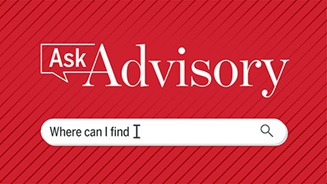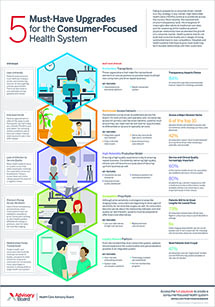In December 2015, Zuckerberg San Francisco General Hospital (ZSFGH) overhauled its entire ED care process after discovering a patient who'd spent four hours waiting to be seen for an injured wrist, only to leave without treatment and try again three days later, Mary Mercer, an ED physician at ZSFGH, and her colleagues write in a JAMA viewpoint. And so far, they've seen length of stay for patients with low-acuity conditions fall by 25%—and the rate of patients leaving without being seen cut in half after just five months.
What happened
The patient, a middle-aged woman, presented at the ED for a wrist injury that resulted from a fall, Mercer and colleagues explain. The woman left after waiting four hours without seeing a clinician.
Three days after her fall, the patient returned to the ED because her wrist had begun to swell, Mercer and colleagues write. The woman was diagnosed with a scaphoid fracture and received a splint and was directed to a follow-up appointment with an orthopedic surgeon. The total length of stay was six hours, according to Mercer and colleagues.
The patient was concerned that the time it took for her to receive treatment could have long-term physical consequences, and she filed a complaint with the hospital.
Evaluating the problem
The team at ZSFGH considered several possible responses, including apologizing, explaining to the patient that the treatment delay likely wouldn't affect her outcome, and telling the physician on duty when the patient first presented how to work more effectively.
Ultimately, the hospital decided to take a step back and evaluate to find a response that would address the root cause of what happened.
To assess the ED care process at the hospital, an interdisciplinary team of front-line physicians, nurses, medical assistants, and executives used a process called "value stream mapping." With this strategy, the team used visual documentation to analyze every step in the ED care delivery process from the patient's perspective, the authors write.
With that knowledge in hand they created a simplified, symbolic representation of those steps, including any inefficiencies or errors experienced.
The team found that, for example, it took 75 minutes and three different monitors for a nurse to finish preliminary orders for a patient with chest pain, and that a triage nurse had to walk to several areas of the ED to find an open hallway chair for a patient with a simple hand laceration.
The team also noted that for low-acuity patients, there was no standardized process to determine whether x-ray imaging would be ordered, what type of clinician would initiate care, or whether the patient should follow up with an outpatient clinic or receive an in-person consultation within the ED.
Fixing the problems
To fix these problems, ZSFGH followed five steps.
- Implement a uniform care pathway. ZSFGH chose a pathway called Fast Track for low acuity patients, the authors write. Fast Track contains strict criteria for the inclusion of low-acuity ED patients, and this information helped the staff better estimate patient need and demand and led them to realize they needed six treatment spaces and flexible treatment teams.
- Standardize processes around the new treatment teams and areas. The hospital developed daily team huddles among the six new treatment teams. At the huddles, the expectations of each staff member were reviewed, the authors write. These standardized processes were reinforced through coaching from departmental leaders, and the huddle allowed staff to ask questions, offer feedback, or troubleshoot.
- Issue real-time performance reports. ZSFGH began issuing real-time performance reports on how things were going, and those reports were shared with both frontline and executive staff, the authors write.
- Crunch the data. Through data analysis, the team discovered that 30% of patient volume could be managed by a small interdisciplinary team, and as a result, the Fast Track team was placed in a separate area of the ED. This allowed for increased capacity for managing more complex patients within the ED. The authors called this "staffing to maintain team consistency."
- Engage with hospital executives. The Fast Track team was constantly in communication with hospital executives—including the CEO, CNO, and CMO—through daily huddles, weekly planning sessions, and quarterly workshops, the authors write. As a result of this, the executive team at ZSFGH understood the improvement needs of the ED more clearly.
Process changes led to improvements in ED efficiency
The Fast Track program produced encouraging results, the authors write. After the program was implemented in December 2015, length of stay for low-acuity patients fell by 25%, from 190 minutes to 150 minutes. The share of patients who left without being seen fell from 8% to 4%.
ZSFGH saw reductions in length of stay for moderate- and high-acuity ED patients as well, the authors write. The authors attributed this to higher capacity in high-acuity treatment areas (Mercer et. al., JAMA, 3/19).
The Patient Experience Toolkit
Even with renewed investment in patient satisfaction, many institutions are struggling to improve, often because they define the ambition too narrowly or pursue a campaign-style approach.
To achieve lasting improvements in patient experience scores, nurse leaders must re-scope their goals to address patients' overall experience, rather than discrete HCAHPS measures.
Don't miss out on the latest Advisory Board insights
Create your free account to access 1 resource, including the latest research and webinars.
Want access without creating an account?
You have 1 free members-only resource remaining this month.
1 free members-only resources remaining
1 free members-only resources remaining
You've reached your limit of free insights
Become a member to access all of Advisory Board's resources, events, and experts
Never miss out on the latest innovative health care content tailored to you.
Benefits include:
You've reached your limit of free insights
Become a member to access all of Advisory Board's resources, events, and experts
Never miss out on the latest innovative health care content tailored to you.
Benefits include:
This content is available through your Curated Research partnership with Advisory Board. Click on ‘view this resource’ to read the full piece
Email ask@advisory.com to learn more
Click on ‘Become a Member’ to learn about the benefits of a Full-Access partnership with Advisory Board
Never miss out on the latest innovative health care content tailored to you.




